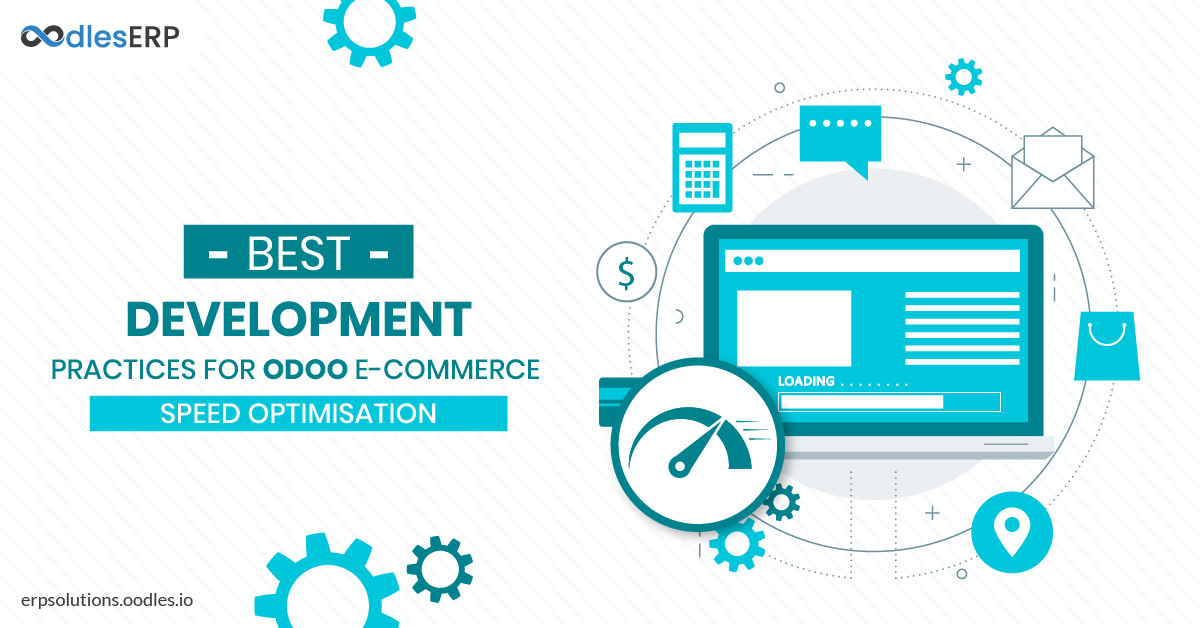Odoo E-commerce Speed Optimisation: An Overview
A DoubleClick by Google study has found that 53% of mobile site visits were abandoned if a page took longer than 3 seconds to load. Website speed is critical for engaging online users. They expect a highly responsive page, smooth navigation, engaging user experience, and faster websites. The benchmark set for page loading time is 2.5 seconds. Websites with faster loading times tend to have better conversion rates. Conversions are important for e-commerce sites to maintain a healthy revenue stream. E-commerce developers should, therefore, platforms and tools that ensure a short website load time.
Odoo e-commerce is one such ERP application that is suitable for developing high-performance e-commerce sites. It is an open source application that supports customization without requiring heavy investments. E-commerce businesses can seamlessly integrate their product promotions, warehouse, shipping and payment gateway services in Odoo. It also has the provision to grant real-time access to resellers.
How to Optimize the Speed of Odoo E-commerce

Choose your Web Server Wisely:
It is recommended to choose NGINX as a web server for your website. NGINX is an open source software for web serving, caching, media streaming, load balancing, and reverse proxying. It has HyperText Transfer Protocol (HTTP) server capabilities and is specifically designed for the website’s maximum performance and stability. NGINX can function as a proxy server for email ( Post Office Protocol (POP3), Internet Message Access Protocol (IMAP), and Simple Mail Transfer Protocol (SMTP). It also functions as a reverse proxy and load balancer for HTTP, UDP and TCP servers. NGINX offers support for SCGI and FastCGI handlers to serve dynamic content scripts like Python and PHP.
Compress Data (Gzip):
Gzip is a free and open source algorithm/file format for data compression. It shrinks a file up to 80% resulting in reduced SSL overhead, (due to a decrease in the number of roundtrips depending on your server’s configuration) decreased bandwidth consumption and improved page load time.
Enabling Gzip compression improves page speed because visitors can easily download much smaller web files while browsing your web pages. In brief, it speeds up the download process of web files.
Gzip compression is important because it reduces the time that a website takes to transfer page files and style sheets. It compresses the file before sending them over to the browser.
Keep-alive in NGINX
When a user visits a website, the browser initiates new connection requests to fetch all files that make up the web pages ( JavaScript, CSS stylesheets and images). This process can increase the page load times of a website.
HTTP Keep-alive is an instruction that enables a single Transmission Control Protocol (TCP) connection to remain open for multiple HTTP responses/requests. It reduces latency and enables web pages to load faster.
Load Balancing in NGINX:
Load balancing is a crucial business practice to improve servers resource availability and efficiency. It is a commonly used technique for optimizing resource utilization, reducing latency and maximizing throughput.
NGINX can be configured as an efficient HTTP load balancer. In the load balancing configuration, it acts as a single entry point to a distributed web application working on multiple separate servers. Load balancer improves the performance, scalability, and reliability of Odoo website.
Reduce the number of Third Party Plugins:
The speed of Odoo e-commerce can be optimized by reducing the number of third-party plugins. If the number of plugins installed is more, then more resources will be required to run the plugins. To increase the speed of Odoo e-commerce, it is recommended to update the plugins as and when security patches are released.
Content Delivery Network (CDN) for High Traffic:
CDN refers to a system of a geographically distributed group of servers that accelerates the delivery of internet content. It facilitates quick transfer of assets needed for loading internet content including stylesheets, videos, images, and javascript files.
CDN replicates commonly requested files (static content) across a globally distributes set of caching servers, thus improving the delivery of content. It reduces the loading time of a website by serving static resources from the nearest server, geographically. If you activate CDN features in Odoo, then static resources like CSS, Javascript and images are loaded from CDN.
Key Advantages of CDN:
- CDN reduces the load on an application origin and improves the experience of the requestor. It delivers a local copy of the content from a nearby cache edge or Point of Presence (PoP).
- It delivers unique dynamic content to the requestor that is not cacheable.
- CDN has the capability to provide a network and application level protection. It prevents harm or loss of service by filtering traffic with web application firewalls integrated at the edge locations and into the caching network.
Avail Benefits of our Odoo E-commerce Development Services
Streamline your business operations with our Odoo development services. We provide end-to-end custom ERP development services including support and maintenance.
Our dedicated team of ERP developers customizes and deploys Odoo suite as per your unique requirements. We have experience in custom Odoo module functionality and development of core Odoo e-commerce arrangement. Our developers are well versed with the basics of e-commerce setup that includes e-commerce theme, page speed requirements, server response time, SEO integration, payment and gateway integration.
Also Read: Developing a Warehouse and Inventory Management System with Odoo







